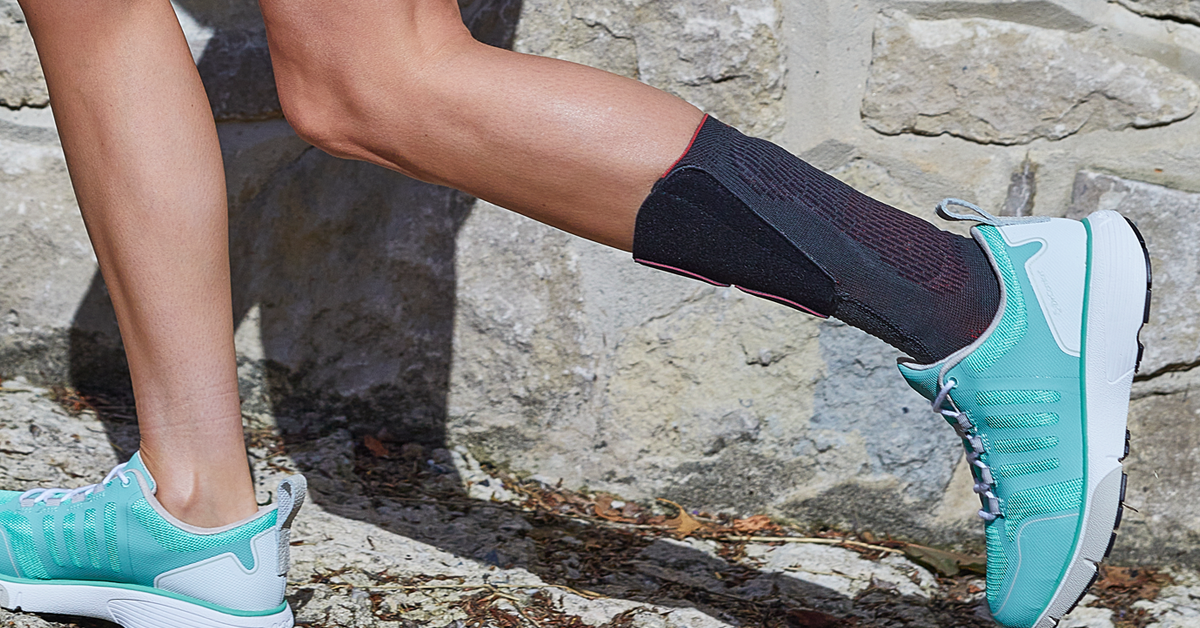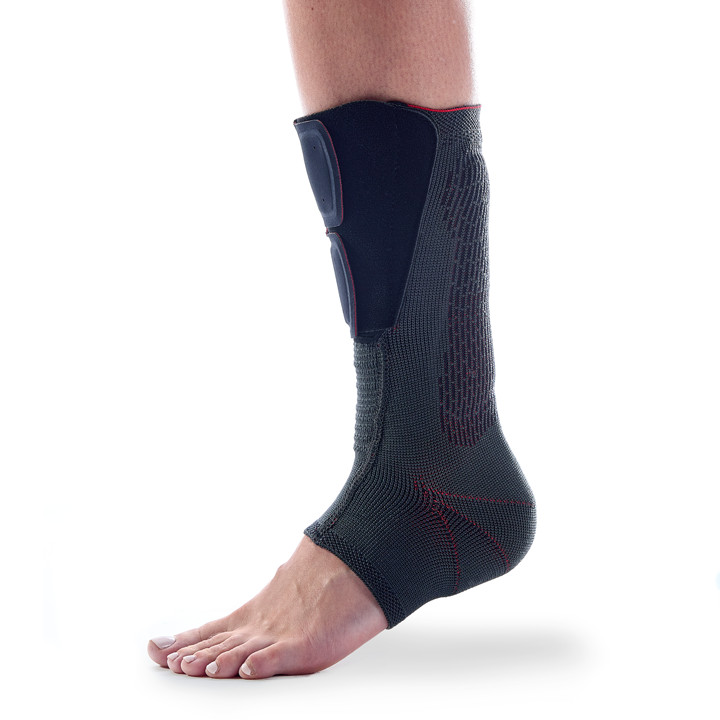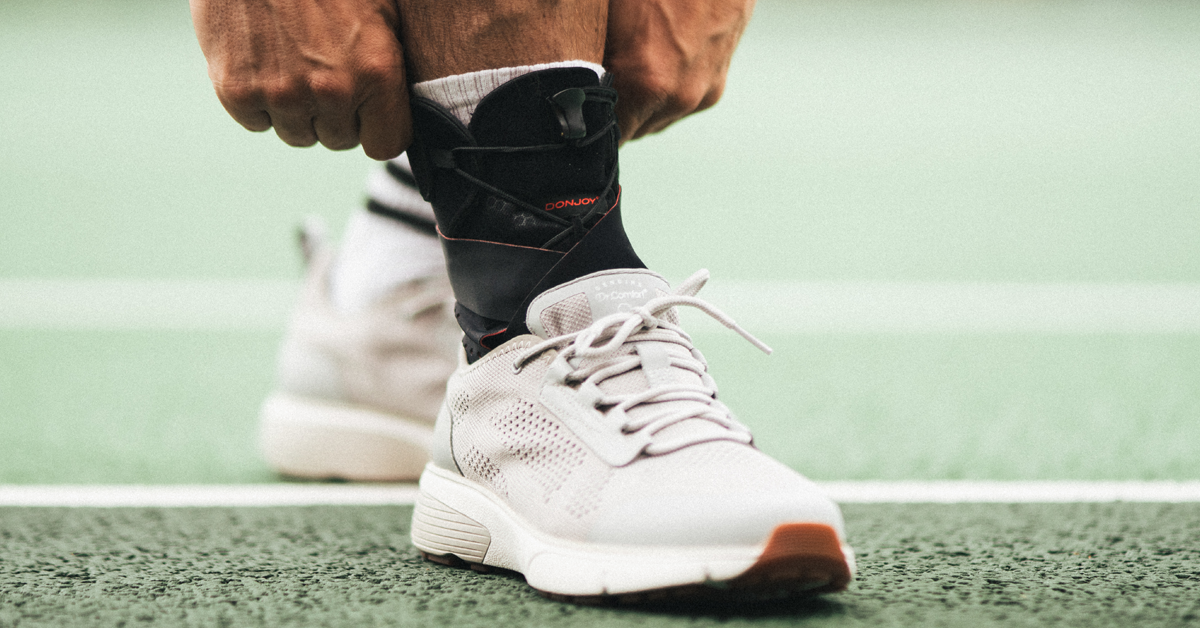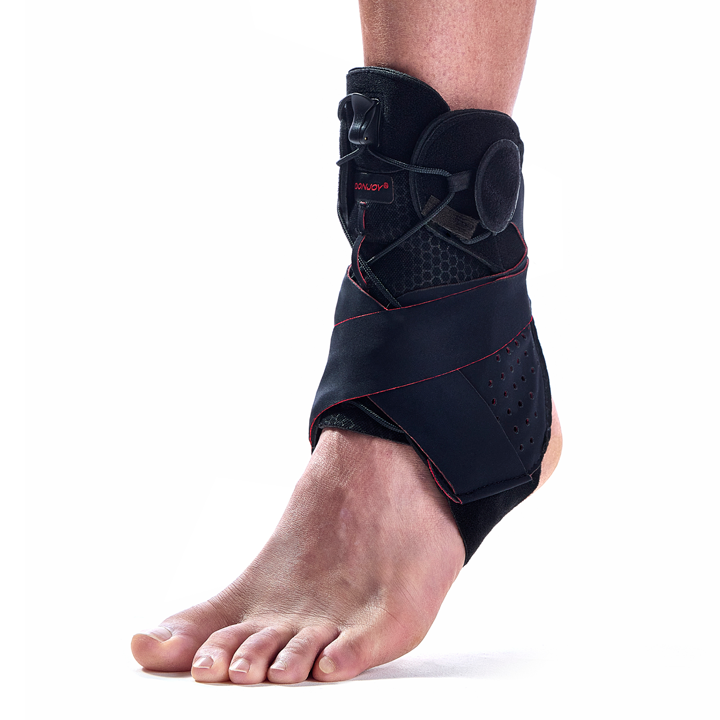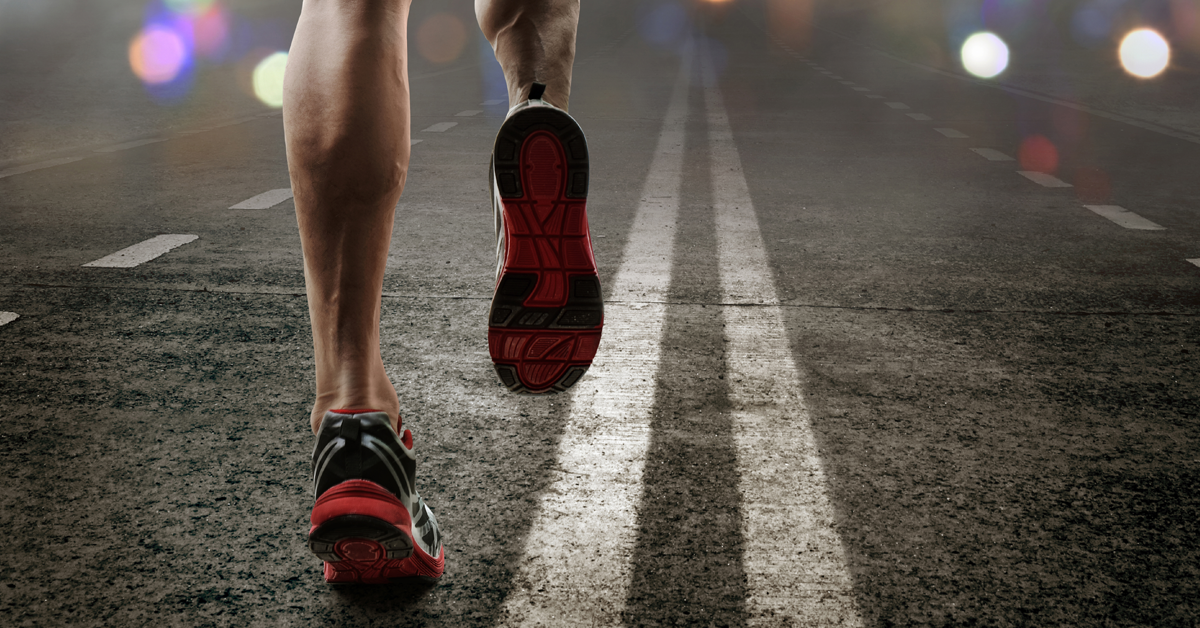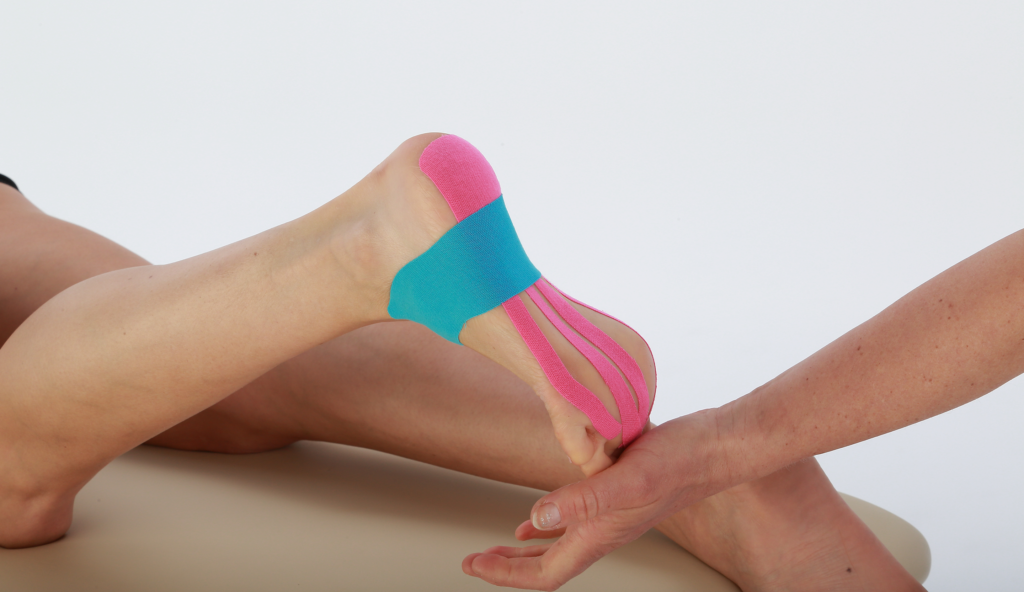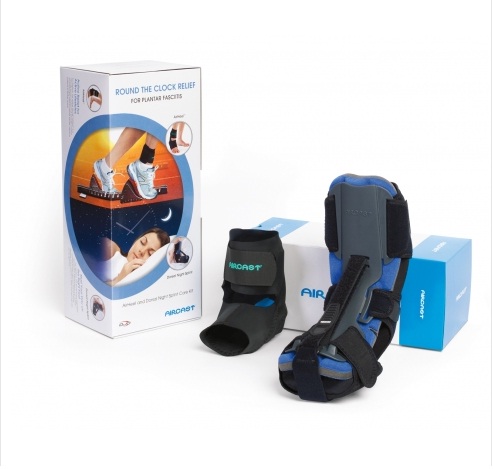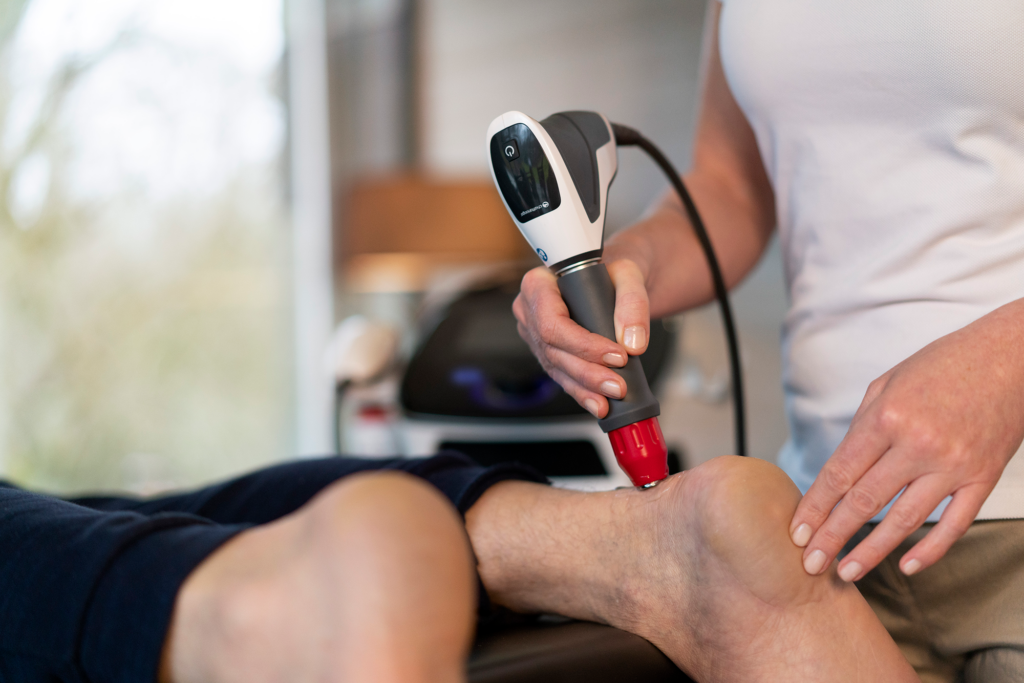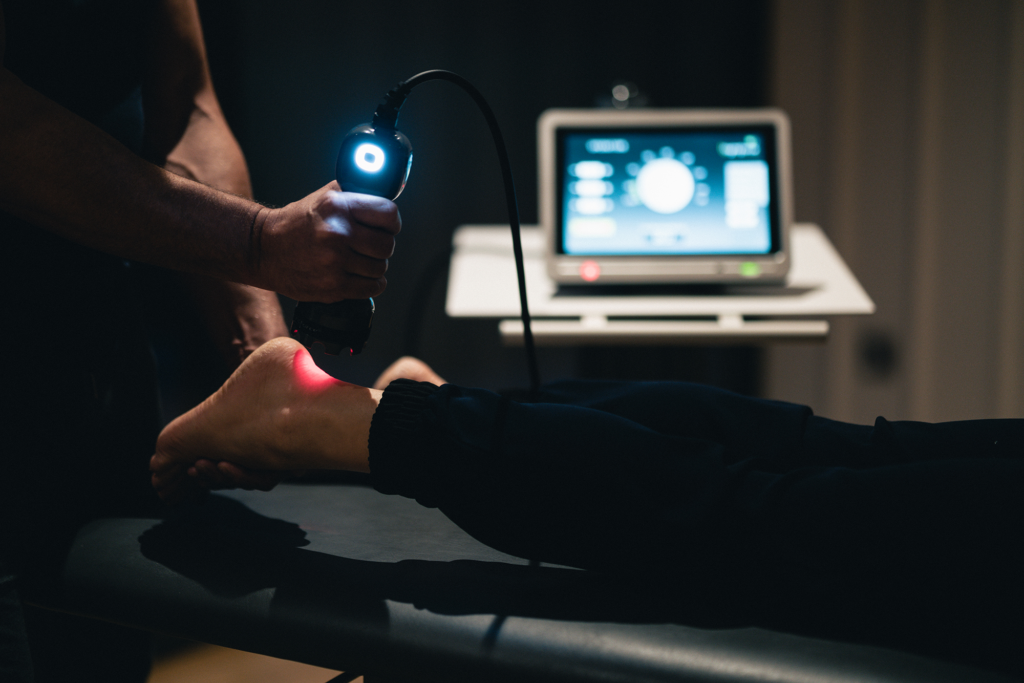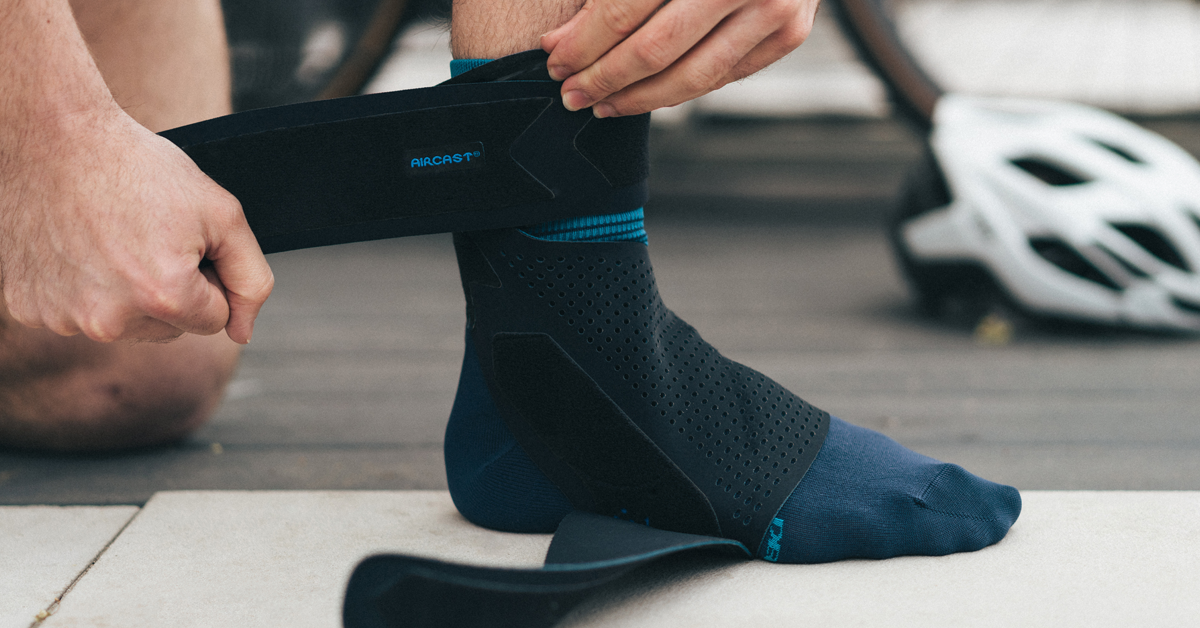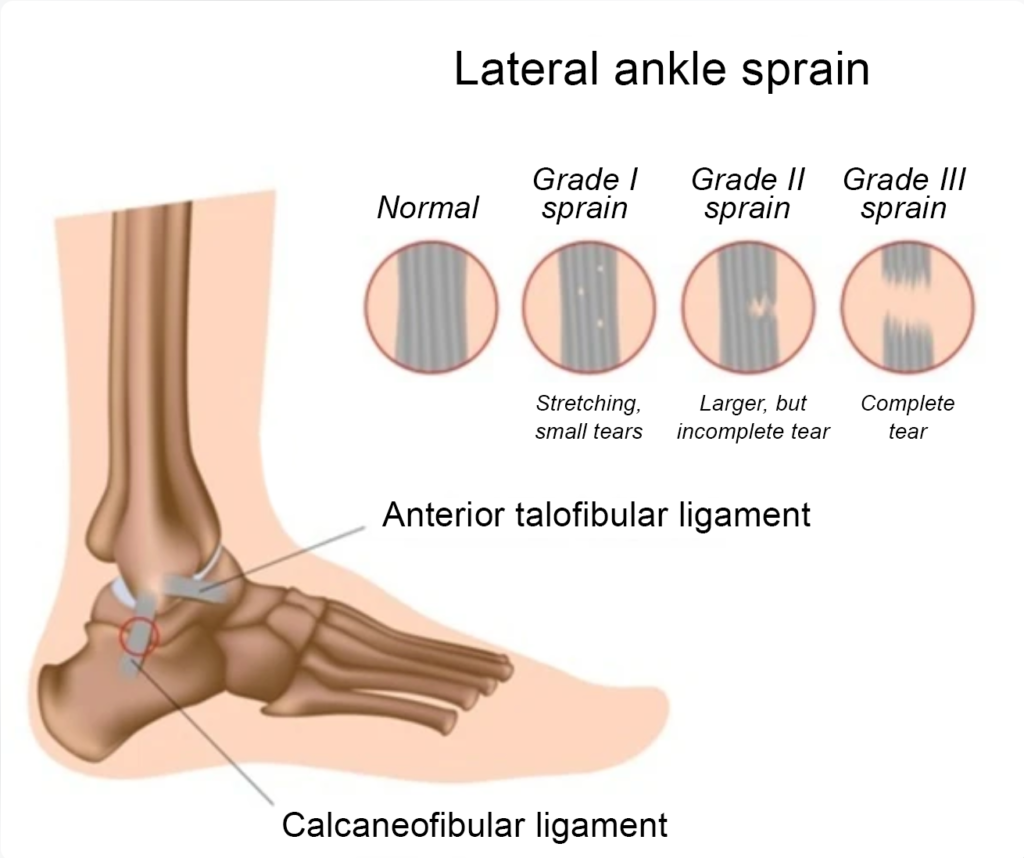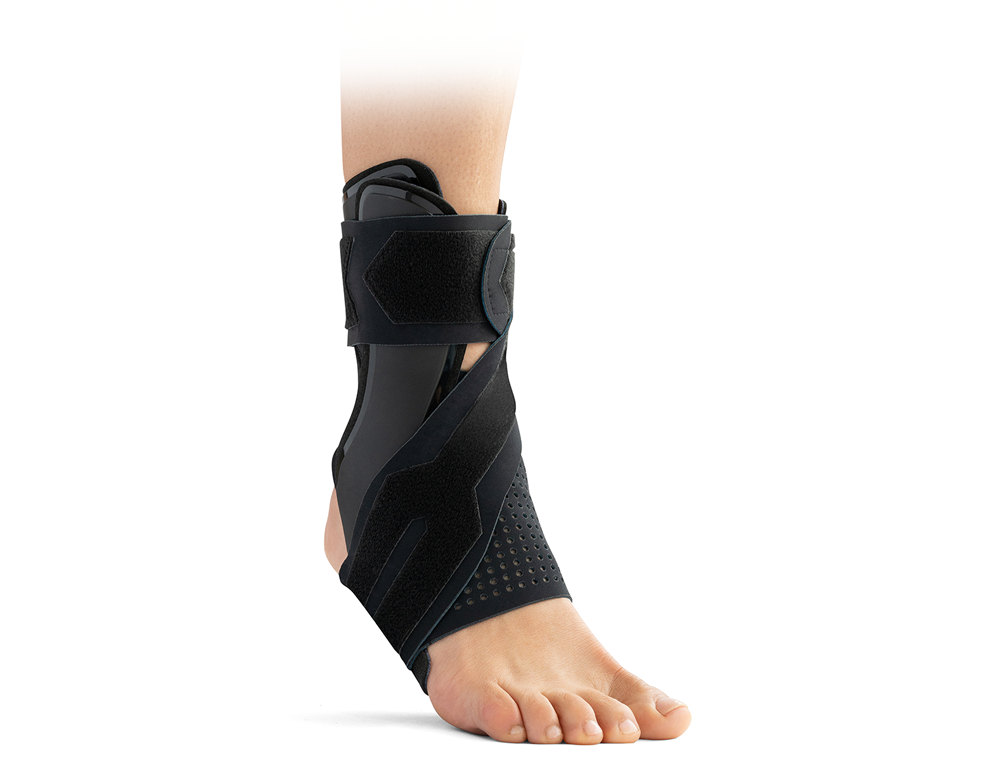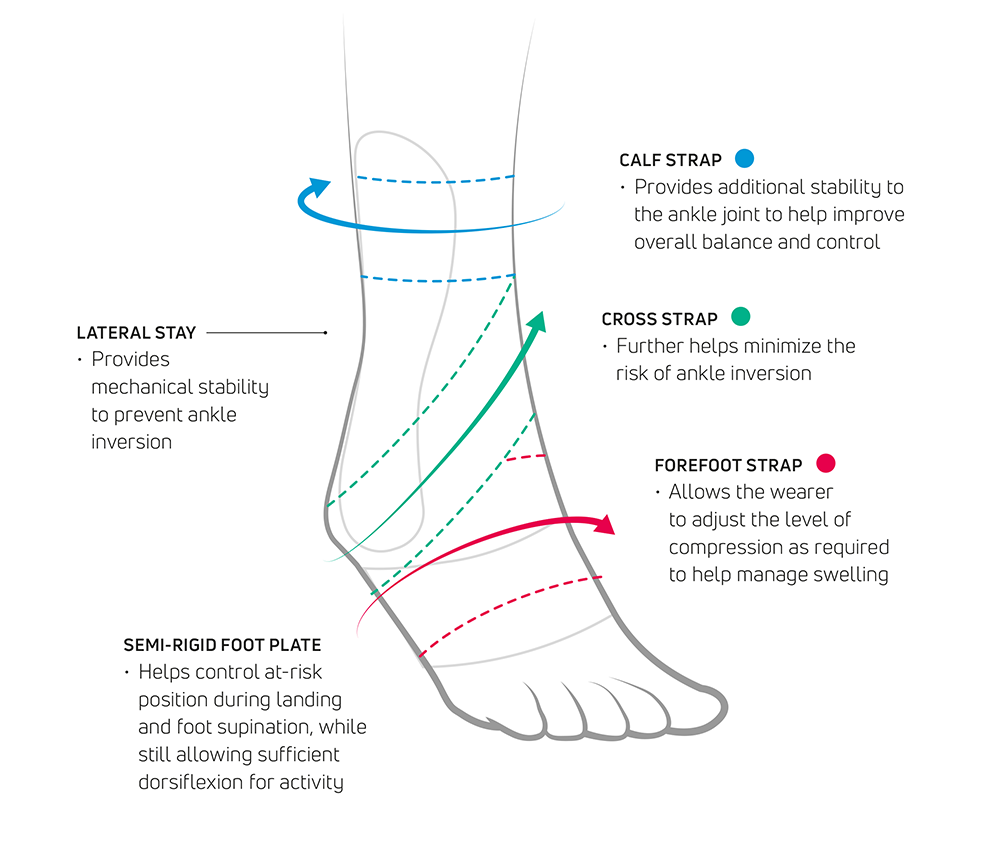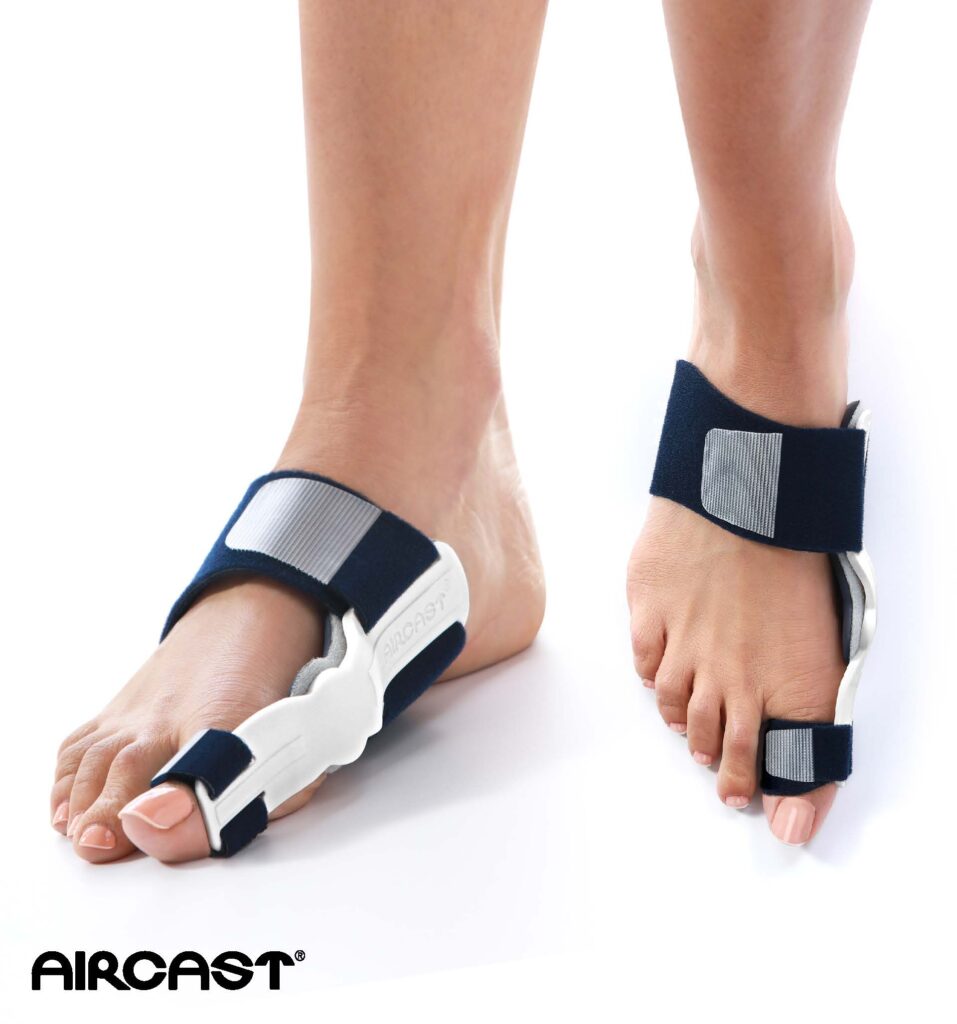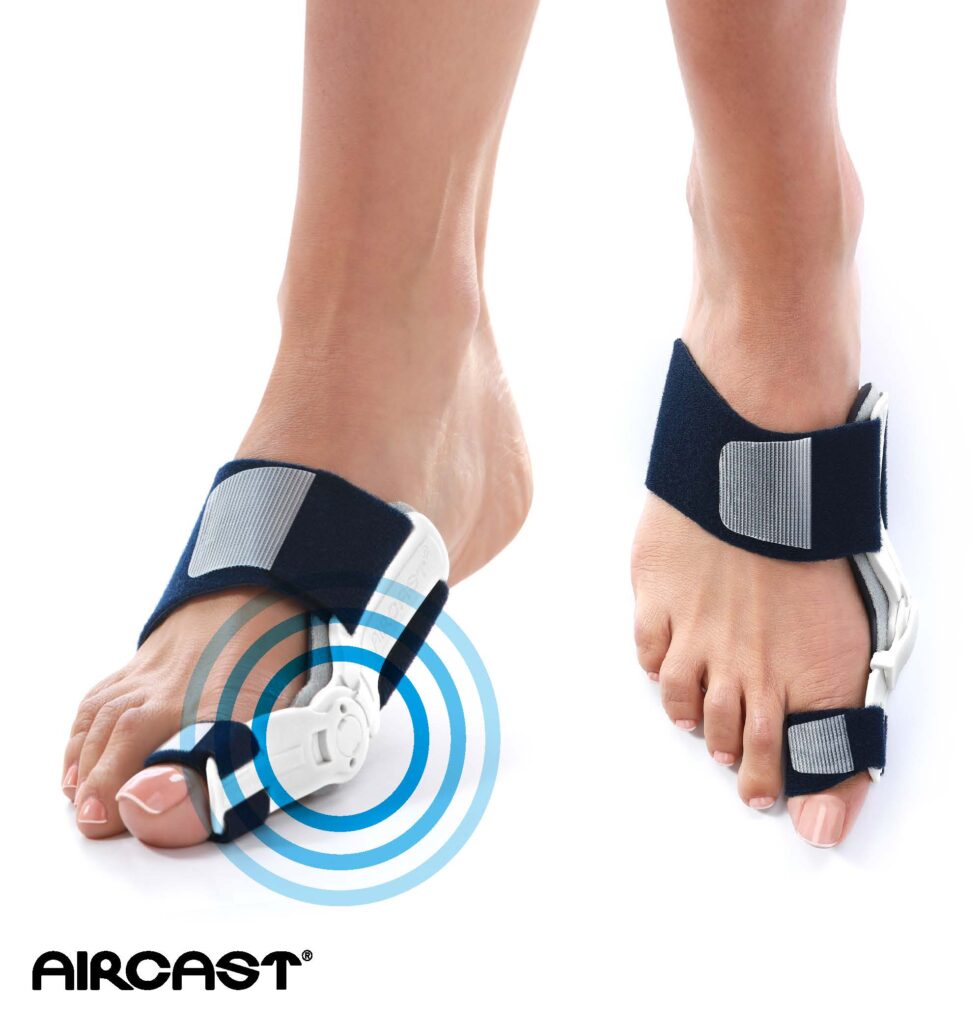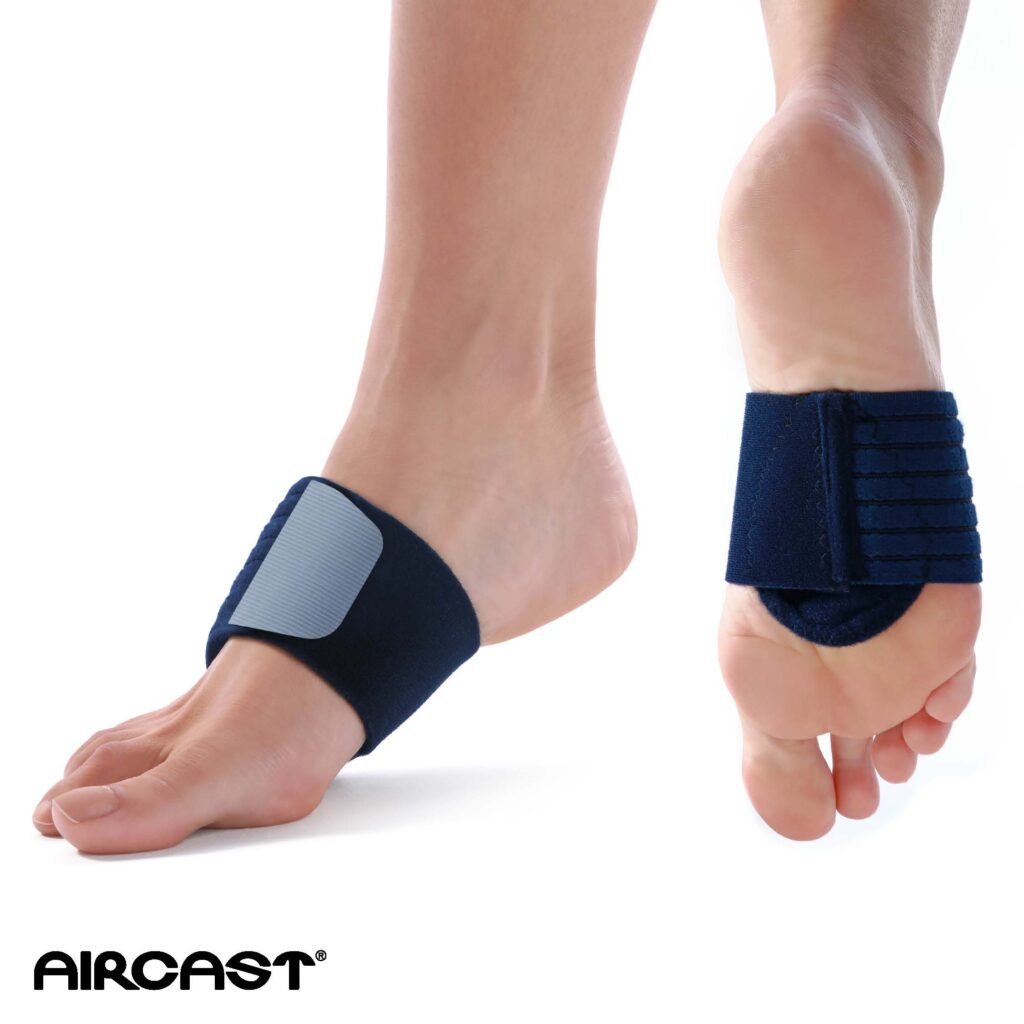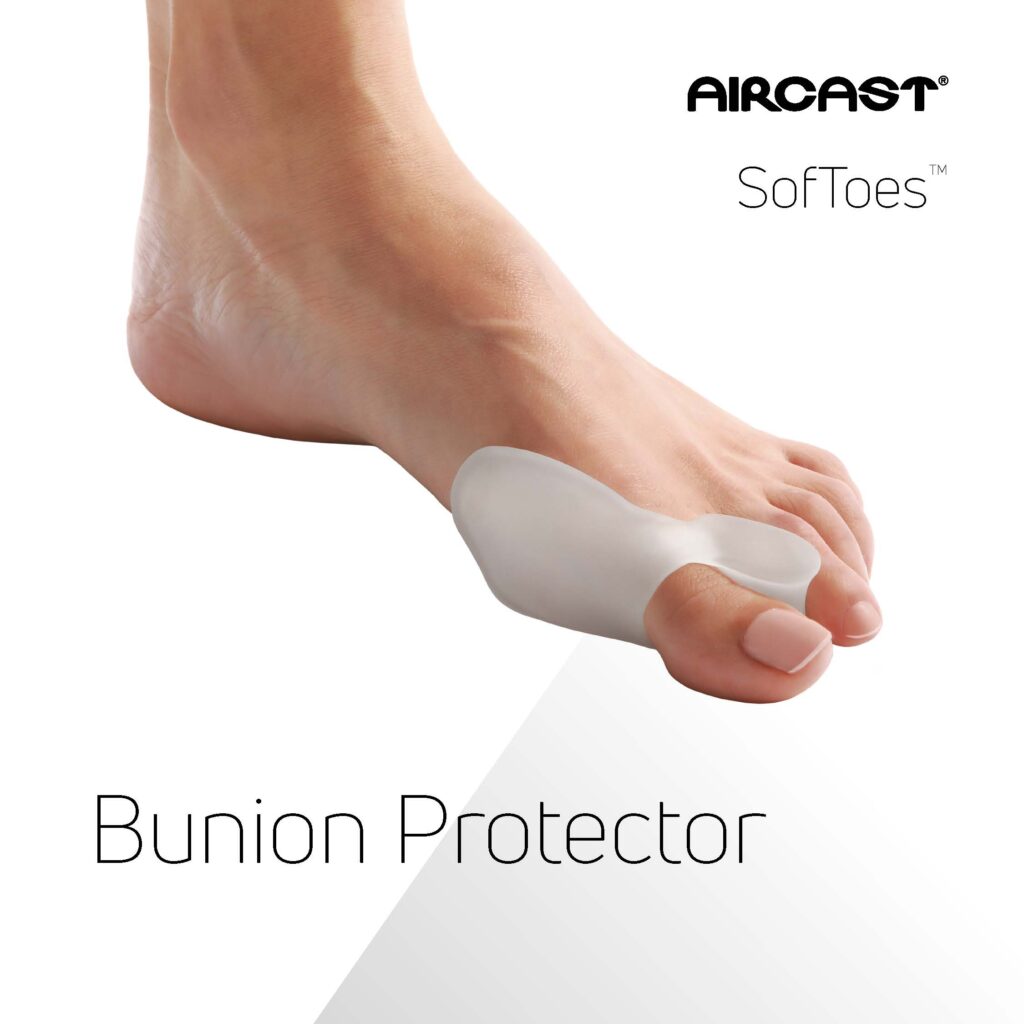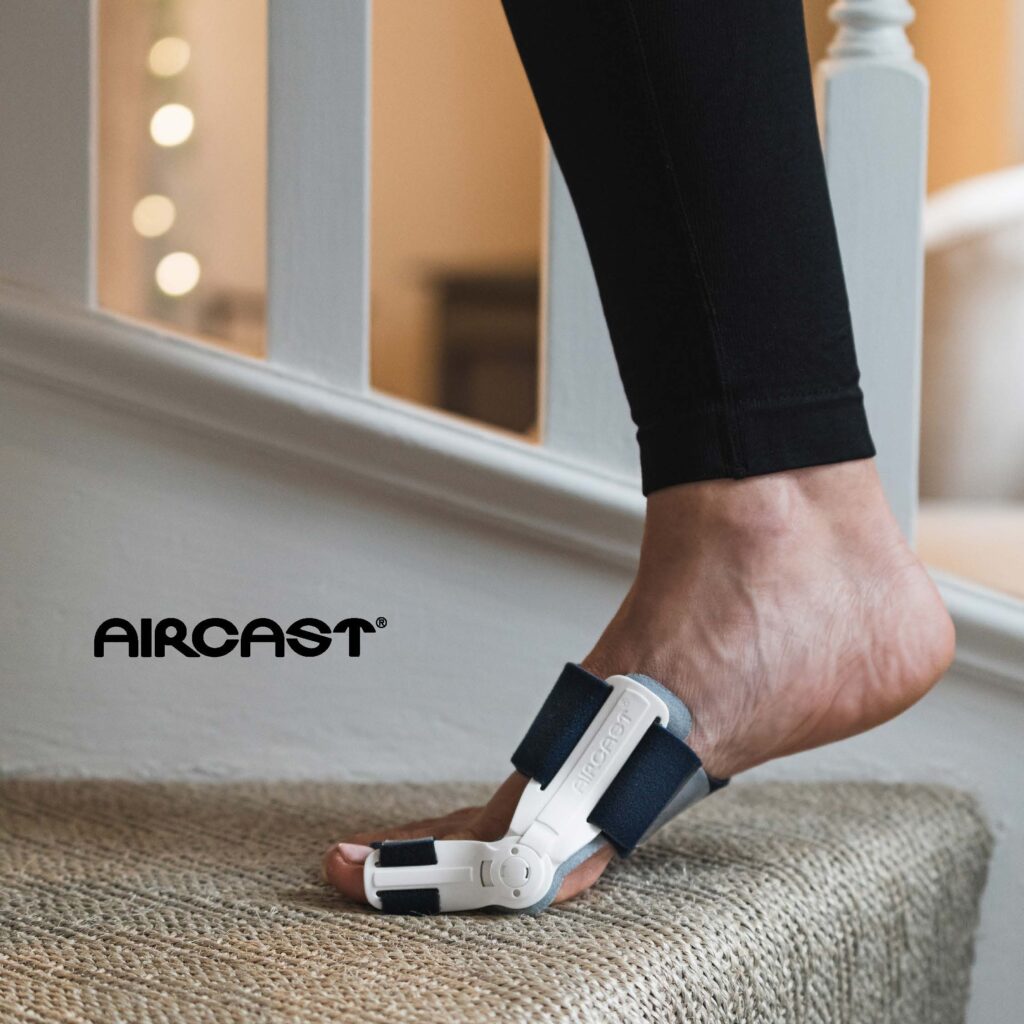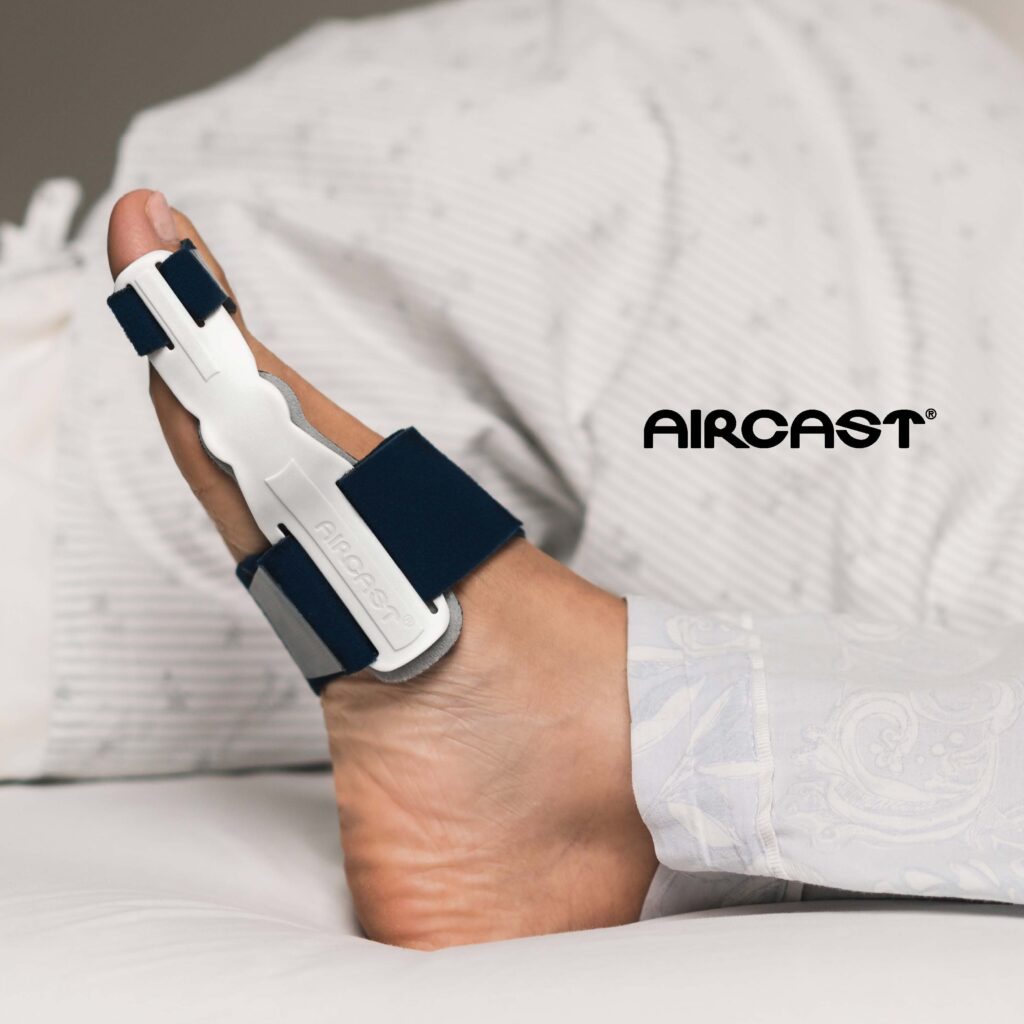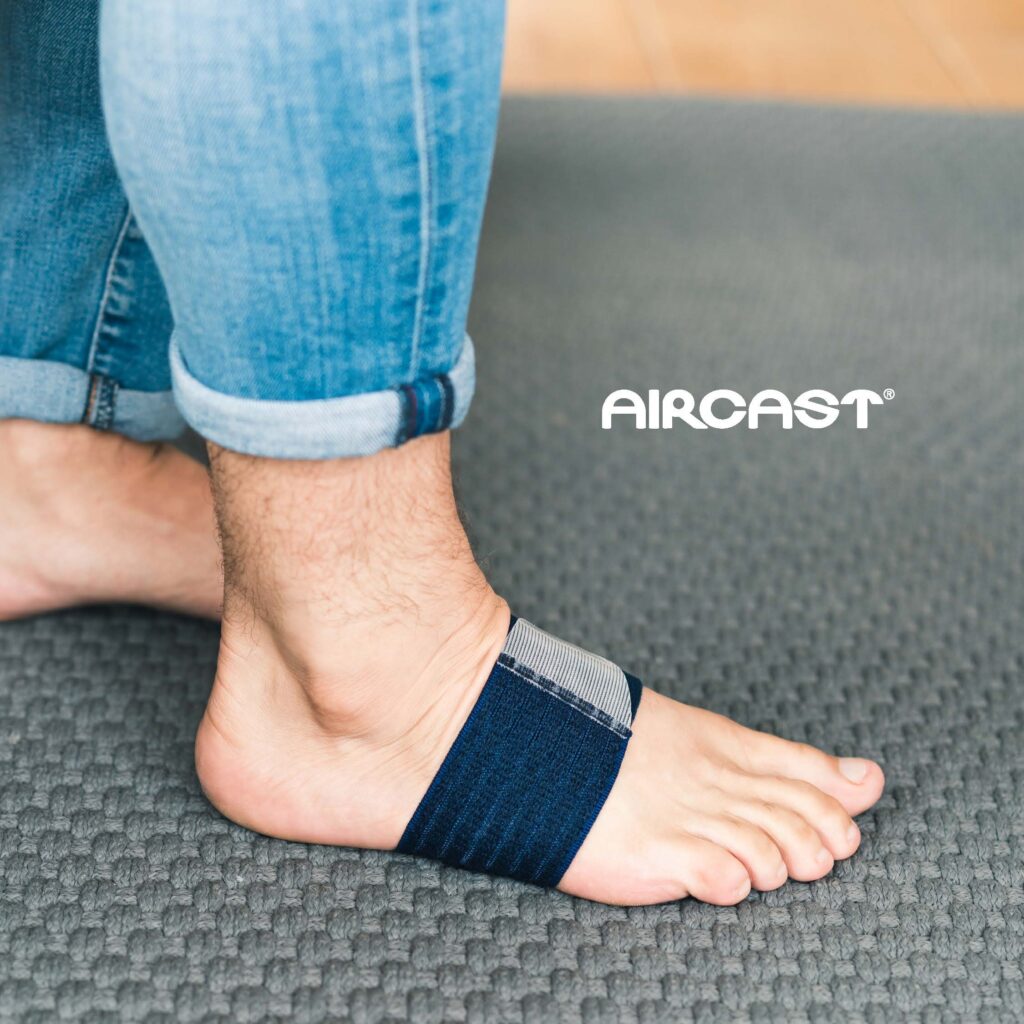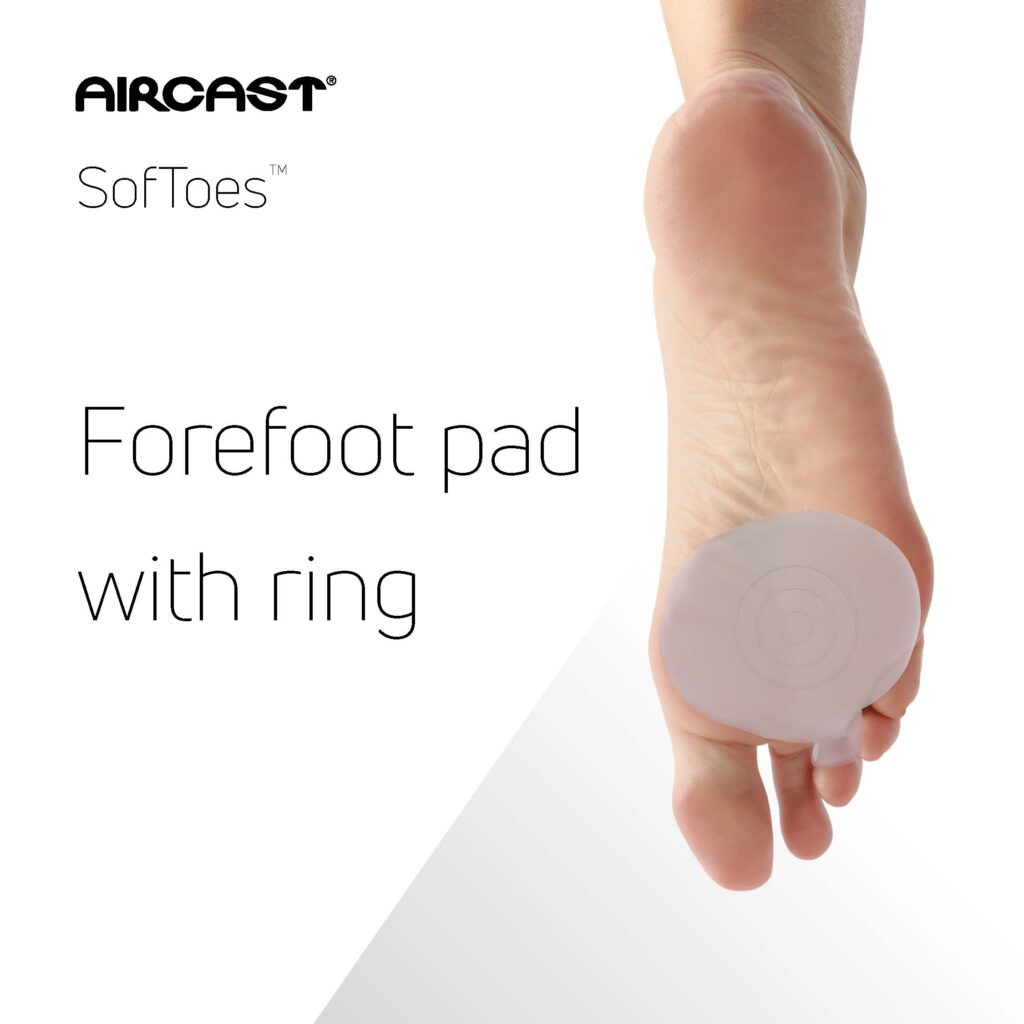An ankle sprain is one of the most common injuries experienced in physically active populations1 and one of the most frequent sport-related injuries,2 with indoor/court sports having the highest incidence.3
Such injuries can result in the ankle joint becoming abnormally loose, which can then lead to chronic ankle instability (CAI). The pain, stiffness, and loss of confidence associated with CAI can be a major hindrance to physical activity, and the condition may require surgery to remedy.
However, functional ankle braces offer patients a conservative way to manage both acute and chronic ankle injuries. This article examines the evidence for these products.
What is an ankle sprain?
Lateral ankle sprains can occur due to forceful ankle plantarflexion and inversion,4 when the foot suddenly rolls inward, resulting in damage to the ligaments of the ankle. In addition to pain, the patient may experience swelling, bruising, and additional discomfort when attempting to put weight on the foot.
There are three categories of sprain, increasing in seriousness:
- Grade I (Mild): Features slight stretching and microscopic tearing of the ligament fibers, resulting in mild tenderness and swelling around the ankle
- Grade II (Moderate): Partial tearing of the ligament occurs, resulting in moderate tenderness and swelling around the ankle. When the ankle moves in certain ways, there is an abnormal looseness of the ankle joint
- Grade III (Severe): The ligament is completely torn, resulting in significant tenderness and swelling around the ankle. When the ankle moves in certain ways, substantial instability occurs
What is chronic ankle instability?
40% of those who experience an ankle sprain go on to develop chronic ankle instability (CAI) and complain of chronic symptoms.5,6 This is a condition characterized by the feeling, or the actual occurrence, of the ankle giving way.7
Individuals with CAI often experience persistent swelling, pain, weakness, reduced ankle range of motion (ROM), ankle instability, diminished self-reported function, and recurrent ankle sprains.7,8
CAI has been identified as a precursor for ankle osteoarthritis (OA), and onset usually occurs a decade earlier than knee or hip OA.9
Chronic ankle sprains may require surgery in the form of arthroscopic ligament reconstruction. Individuals with CAI have been identified as having mechanical instability, relating to structural changes around the ankle, and functional instability which has been associated with a reduction in sensorimotor and neuromuscular control.10
Bracing for chronic ankle instability
An ankle brace is a garment designed to stabilize the ankle before or after injury. Available in soft or semi-rigid types, these braces are designed to perform some or all of the following functions:
- Improve ankle stiffness and thus mechanical stability11
- Improve neuromuscular control12
- Improve grounding of the foot12
- Decrease excessive ROM11
- Enhance proprioceptive acuity (the body’s ability to sense its own location, movement, and actions)13
Several clinical studies have been carried out to determine the effectiveness of ankle bracing in these areas.
Hals et al.’s 2000 study showed the Aircast® Sport Stirrup® significantly improved shuttle-run performance in subjects with post-acute, unilateral, mechanically stable but functionally unstable ankle sprains.14
Habadi et al. (2014), demonstrated that soft and semi-rigid ankle orthoses are beneficial for dynamic balance of individuals with functional ankle instability.15
In their 2020 systematic review, Reyburn and Powden found that the current literature supports a strong effect of ankle braces on the dynamic balance of those with CAI.16
In 1998, Vaes et al. discovered the Aircast Air-Stirrup® brace significantly decreased talar tilt of unstable ankles in static and dynamic test conditions and slowed down the simulated sprain speed.17
A randomized controlled trial by Janssen et al. (2014), including 384 athletes who had sustained a lateral ankle sprain, revealed that bracing with an Aircast A60™ brace was superior to neuromuscular training for reducing the incidence of ankle sprain recurrence.18
Introducing ActyFoot™ by Aircast® – the ankle support putting patients in control of stability
The latest ankle support from Aircast, ActyFoot™ provides a functional, modular management option to help protect existing ankle injuries or prevent them from occurring in the first place.
Thanks to its modular design, ActyFoot allows patients to control the level of stability their ankle needs. By simply adding the attachable lateral stay, patients can receive the benefit of increased immobilization and protection to aid recovery following injury or for added confidence during activity.
Without the stay, the unique strap system provides sufficient support for sports and daily activities while allowing greater freedom of movement.
How ActyFoot helps to provide ankle stability
The brace’s three integrated straps provide proprioceptive feedback and work together with semi-rigid elements to stabilize the ankle and restrict excessive range of movement.
References
- Hootman, J.M., Dick, R. & Agel, J. (2007). Epidemiology of collegiate injuries for 15 sports: summary and recommendations for injury prevention initiatives. Journal of athletic training, 42(2): 311.
- Fong, D.T.P., Hong, Y., Chan, L.K., Yung, P.S.H. & Chan, K.M. (2007). A systematic review on ankle injury and ankle sprain in sports. Sports medicine, 37(1): 73-94.
- Doherty, C., Delahunt, E., Caulfield, B., Hertel, J., Ryan, J. & Bleakley, C. (2014). The incidence and prevalence of ankle sprain injury: a systematic review and meta-analysis of prospective epidemiological studies. Sports medicine, 44(1): 123-140.
- Hubbard, T.J. & Wikstrom, E.A. (2010). Ankle sprain: pathophysiology, predisposing factors, and management strategies. Open Access Journal of Sports Medicine, 1: 115.
- Anandacoomarasamy, A. & Barnsley, L. (2005). Long term outcomes of inversion ankle injuries. Br J Sports Med, 39(3): e14; discussion e14.
- Konradsen L., Bech L., Ehrenbjerg M. & Nickelsen T. (2002). Seven years follow-up after ankle inversion trauma. Scand J Med Sci Sports, 12(3): 129-135.
- Hertel, J. & Corbett, R.O. (2019). An updated model of chronic ankle instability. Journal of athletic training, 54(6): 572-588.
- Ahn, C. S., Kim, H. S., & Kim, M. C. (2011). The Effect of the EMG Activity of the Lower Leg with Dynamic Balance of the Recreational Athletes. The Journal of Physical Therapy Science. 579–583.
- Saltzman, C.L., Zimmerman, M.B., O’Rourke, M., Brown, T.D., Buckwalter, J.A. & Johnston, R. (2006). Impact of comorbidities on the measurement of health in patients with ankle osteoarthritis. J Bone Joint Surg Am., 88(11): 2366-2372.
- Hertel, J., (2002). Functional anatomy, pathomechanics, and pathophysiology of lateral ankle instability. Journal of athletic training, 37(4): 364.
- Zinder, S.M., Granata, K.P., Shultz, S.J. & Gansneder, B.M. (2009). Ankle bracing and the neuromuscular factors influencing joint stiffness. Journal of Athletic Training, 44(4): 363-369.
- Kobayashi, T., Saka, M., Suzuki, E., Yamazaki, N., Suzukawa, M., Akaike, A., Shimizu, K. & Gamada, K. (2014). The effects of a semi-rigid brace or taping on talocrural and subtalar kinematics in chronic ankle instability. Foot & Ankle Specialist, 7(6): 471-477.
- Raymond, J., Nicholson, L.L., Hiller, C.E. & Refshauge, K.M. (2012). The effect of ankle taping or bracing on proprioception in functional ankle instability: a systematic review and meta-analysis. Journal of Science and Medicine in Sport, 15(5): 386-392.
- Hals, T. M., Sitler, M. R., & Mattacola, C. G. (2000). Effect of a semi-rigid ankle stabilizer on performance in persons with functional ankle instability. The Journal of orthopaedic and sports physical therapy, 30(9), 552–556.
- Hadadi, M., Mousavi, M. E., Fardipour, S., Vameghi, R., & Mazaheri, M. (2014). Effect of soft and semirigid ankle orthoses on Star Excursion Balance Test performance in patients with functional ankle instability. Journal of science and medicine in sport, 17(4): 430–433.
- Reyburn, R. J., & Powden, C. J. (2020). Dynamic Balance Measures in Healthy and Chronic Ankle Instability Participants While Wearing Ankle Braces: Systematic Review With Meta-Analysis. Journal of sport rehabilitation, 30(4): 660–667.
- Vaes, P. H., Duquet, W., Casteleyn, P. P., Handelberg, F., & Opdecam, P. (1998). Static and dynamic roentgenographic analysis of ankle stability in braced and nonbraced stable and functionally unstable ankles. The American journal of sports medicine, 26(5): 692–702.
- Janssen, K. W., van Mechelen, W., & Verhagen, E. A. (2014). Bracing superior to neuromuscular training for the prevention of self-reported recurrent ankle sprains: a three-arm randomised controlled trial. British journal of sports medicine, 48(16): 1235–1239.

